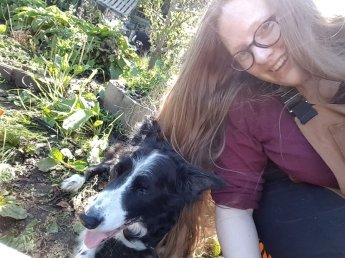
[UPS! I put the wrong link in email: Go here https://www.ethicalpets.co.uk/blog/2020/03/how-to-rescue-injured-animals/]
I can’t believe it’s been a whole year since we got our allotment! A LOT has changed over that time.
We were trying to do a Vegan Organic allotment. What it difficult? Find out how we did…
Before and after
Here is the allotment when we first got it, in December 2018 – my lovely brother was helping us pull up some elderly fruit bushes.
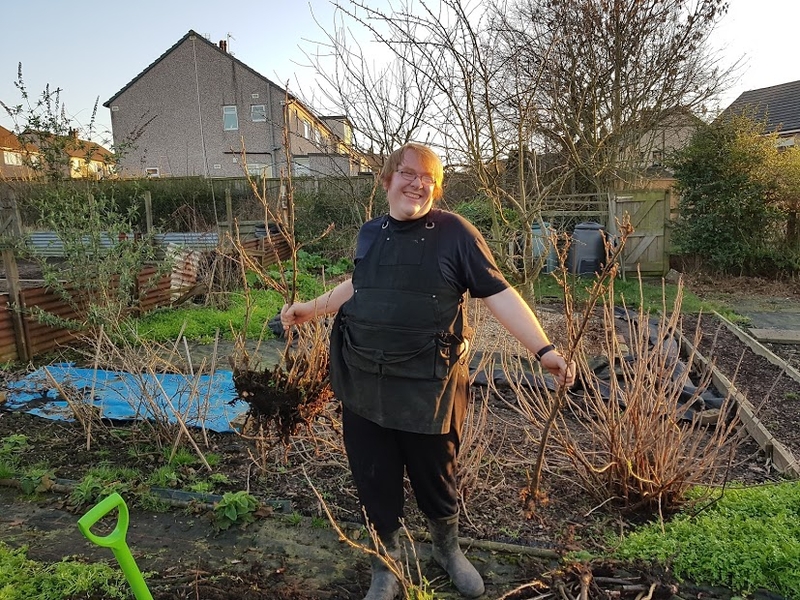
Here is the allotment today!
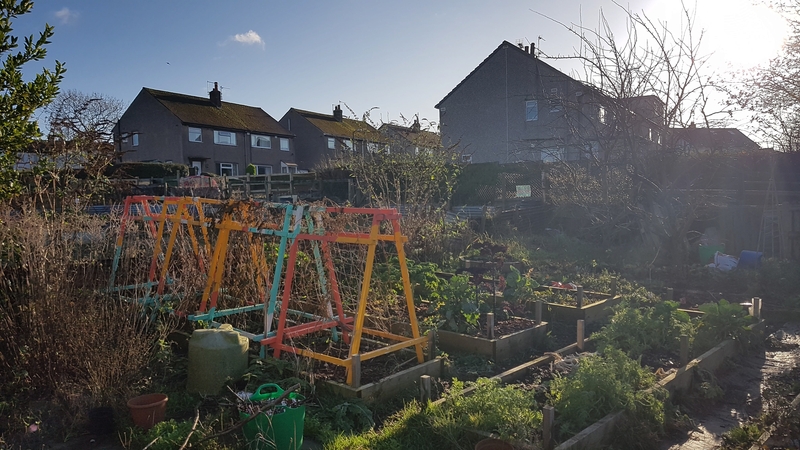
As you can see, a lot has changed! We have new raised beds and even in winter there is a lot going on!
Growing over the year
Here is a quick summary of the year. We were planning on blogging regularly, but to be honest, it’s nicer up there without phones and work on our mind. So we have just taken the occasional photo and will do updates like this now and then.
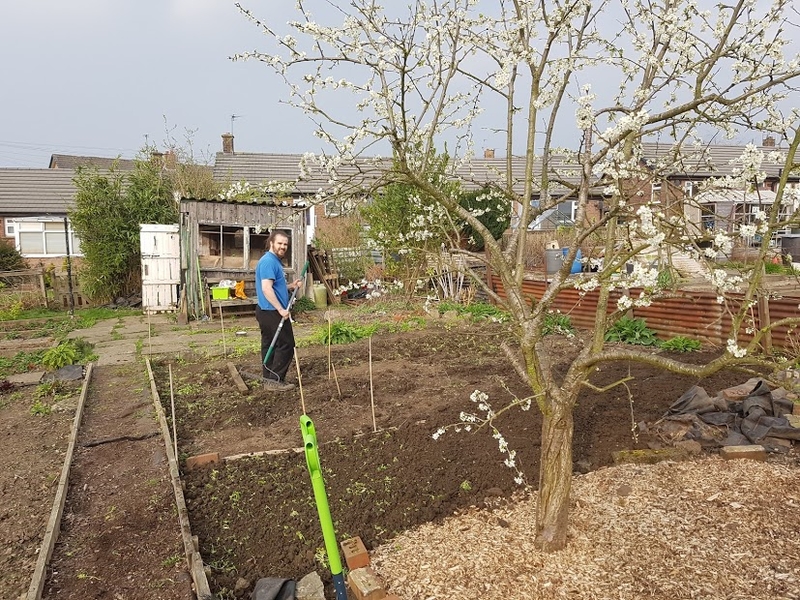
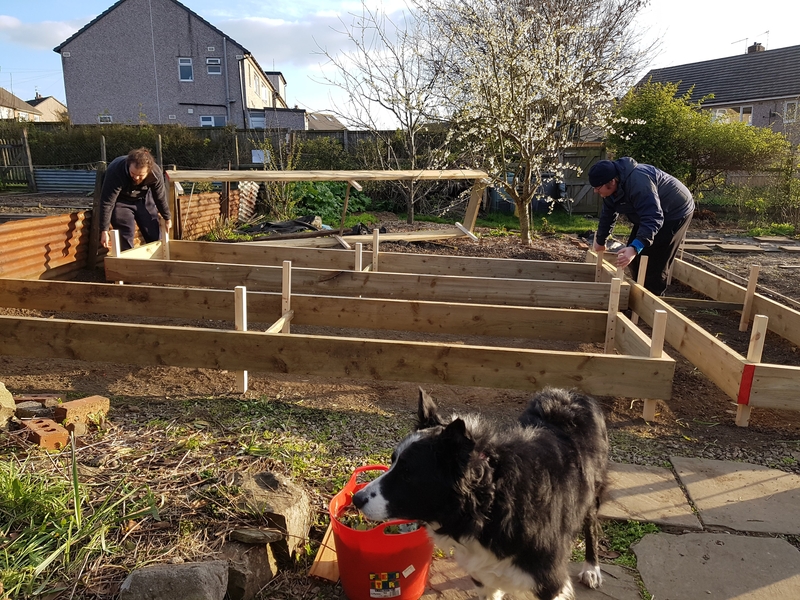
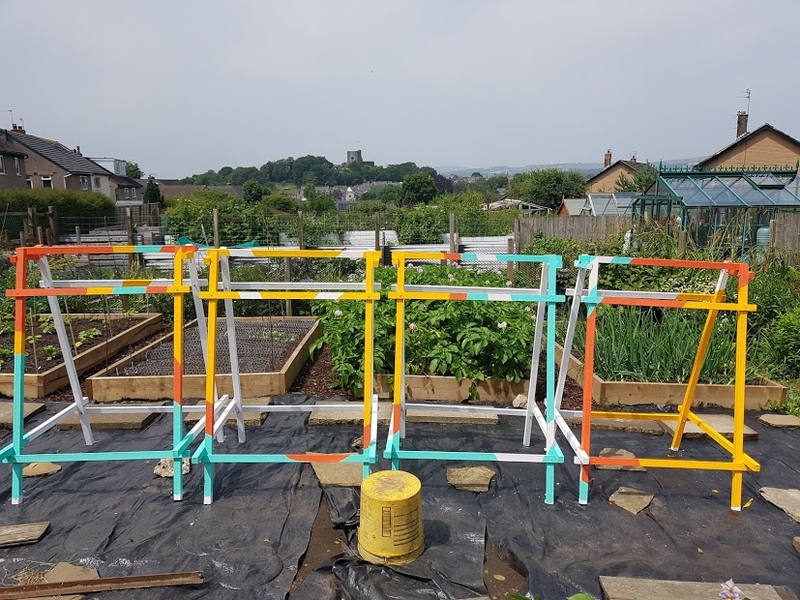
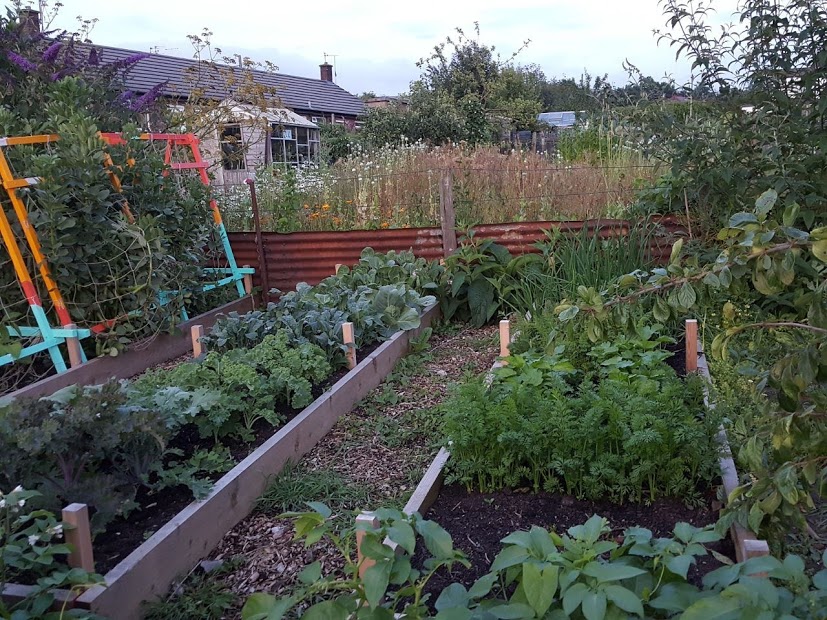
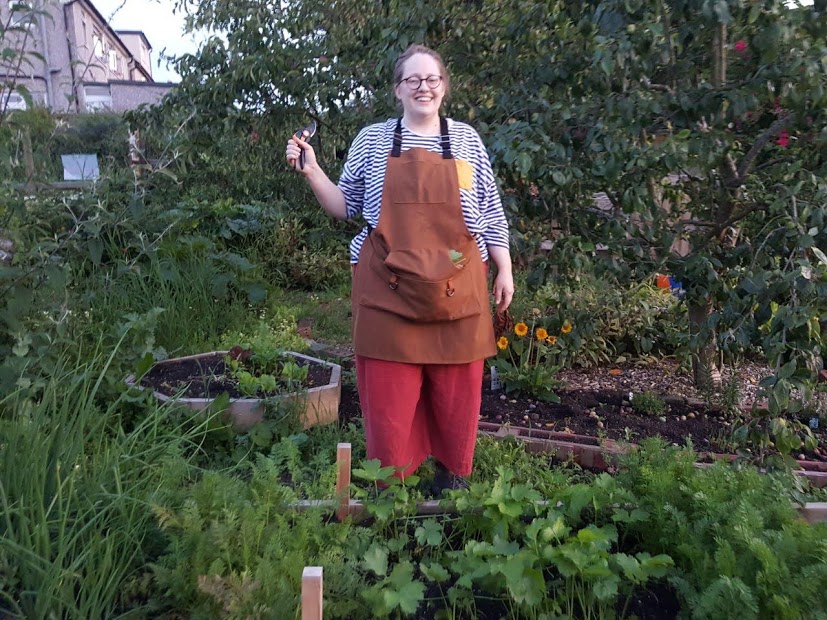
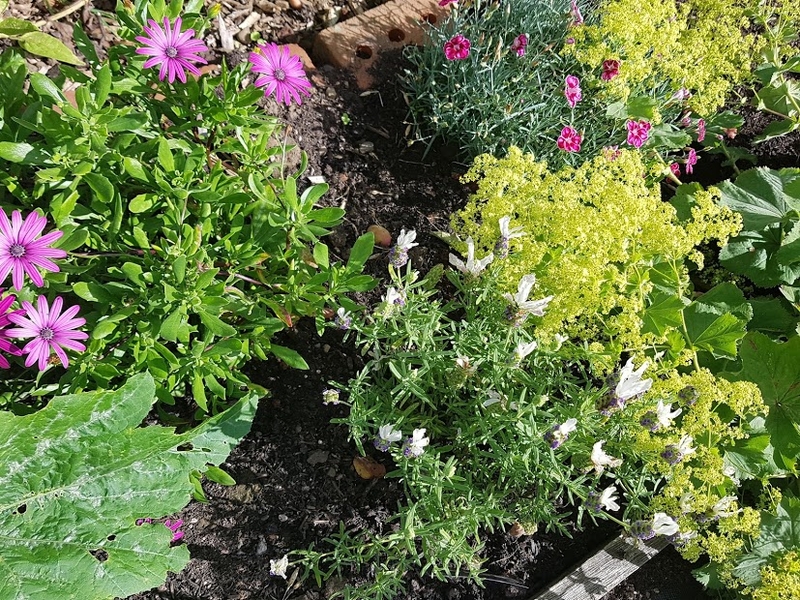
What we learned
We learned a lot over the year. Here are a few top tips for getting started with an Allotment, especially a Vegan Organic one!
Take it easy
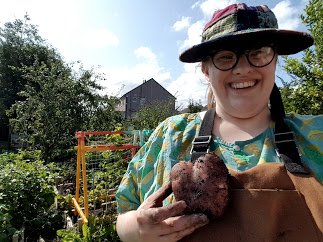
First of all, there is more flexibility than you might think. You really don’t have to spend that much time working on the allotment if you don’t want to.
In a new allotment, you will absolutely have to spend a couple of long weekends on the big jobs. You just have to make a plan and do it. After that, you’ll need to spend maybe 6-10 full days of planting and weeding – something like that.
Then after that, you can get away with being quite lazy if you need/want – especially if you set up some kind of automatic watering.
To be honest, watering, having a look around and harvesting are the main activities, a nice way to end the day in summer. Okay, so you’ll have some weeds and lose some crop to “pests” if you work this way – but it’s not the end of the world, right?
Accept the “pests”
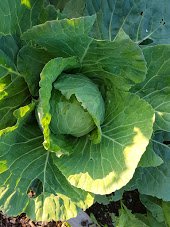
You will have “pests” – we had basically all of them! The only one we didn’t get is potato blight, which we are expecting next year.
But it’s okay. You can, if you want, take preventative measures that don’t need chemicals. Physical barriers are the main thing. We didn’t bother this year because we wanted to see what it would be like without it.
The caterpillars and white fly on the greens weren’t too bad really. There were a lot of caterpillars, and they came in waves, but we just picked them off and put them to the side with a few leaves to eat. It’s not like we were short of kale, we had plenty to spare. It was a bit unnerving to see how much they can eat, but we still had lots left.
The white fly things (little tiny flies under the leaves) were more of an issue, but we just washed them off while watering and before eating. I don’t think either of those are worth the time/cost of making big netting frames etc.
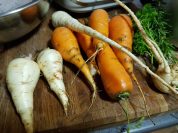
The carrot fly, however, was quite destructive and while the carrots were mostly still edible, we will pay more attention this year. We will try using a different plant and harvest schedule and also try planting in tall bags to keep the plants above the fly’s range.
The brown rot on the plum tree was also really annoying, but actually we had more plums than we could use anyway. We have given the over-grown trees a hard winter prune which should help prevent it next year.
Somethings grow and some things don’t
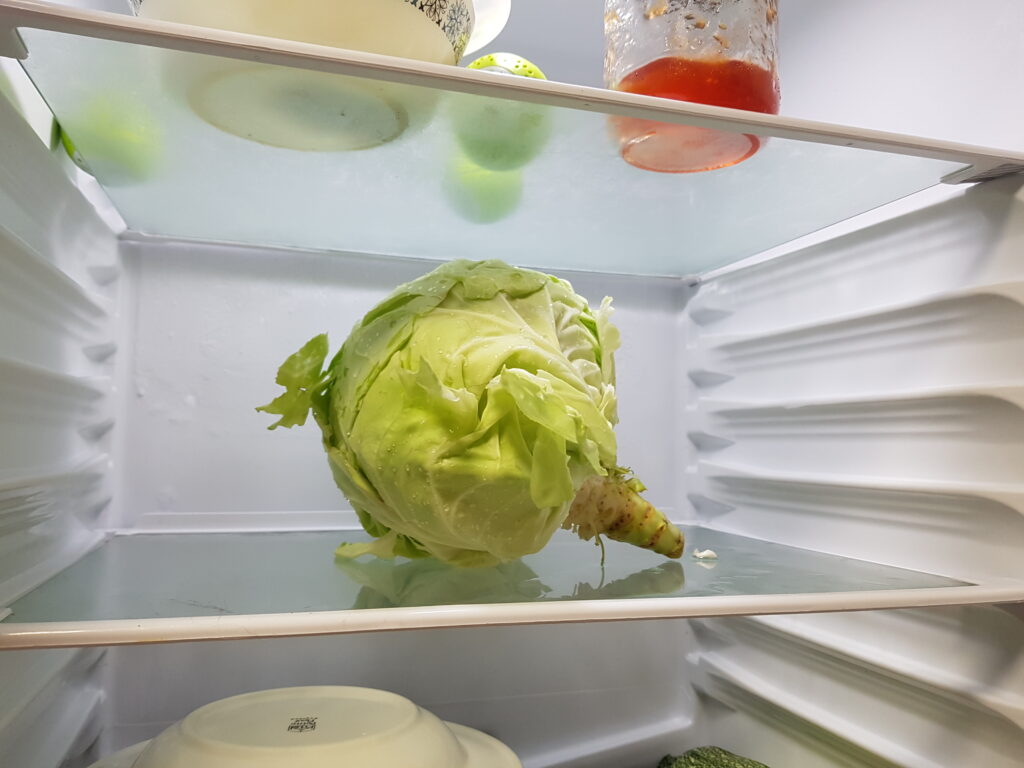
We found that some things did really well: broad beans, kale, plums and spring onions were all very happy. We didn’t get any peas however, and very few beans.
Also, the potatoes behaved very erratically – probably because of the disrupted seasons caused by climate change. The leaves didn’t die back as expected, the usual cue for harvest, so we ended up with very big small potatoes!
However, all the potatoes have kept for many months which as been great. Digging them up was very annoying – pulling didn’t work. Next year we will plant in bags!
The real challenge is yet to come!
Doing Veganic for the first year was easy for us – we had bought in some soil (vegan!) that was already very nutritious. The danger is that the soil loses it’s nutrients over time and that we don’t replenish them adequately.
So – we have worked on improving the soil using mulches, green manure, home-made compost and a no-dig approach. Only time will tell if our soil will stay rich and nutritious without non-vegan or synthetic products. Watch this space!
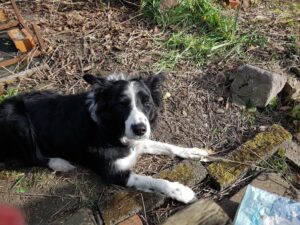
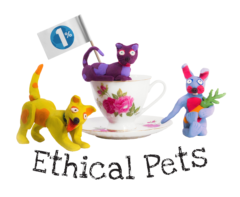
Sounds fabulous, well done all!
Where did you get the vegan soil?
Looking forward to further updates
It was just a local guy! I called up and asked about the source of the soil and does it have any animal products in. He said it was only made up of soil from fylde (the local area that all the topsoil comes from) and for the type I needed, this is mixed with green waste only compost from the council (in our area don’t do anaerobic digestion, so there is no cooked food/meat used, just green waste). I was really impressed that he knew so much. A LOT of the people I spoke to were… kinda dodgy. It was worth doing the research and calling round till I found a place I was satisfied with.